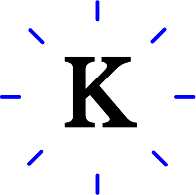Using images, tabels or figures in the text
Images, figures, tables etc. are works that are protected by the Norwegian Copyright Act [only in Norwegian]. To reuse images or other illustrations, you must consider necessity, citation rights, copyright and privacy.
Is it necessary?
Does the illustration provide essential information in addition to the text, or is it just decoration? Images and other illustrations must add something that the text itself cannot give the reader
Citation rights:
There is no concrete rule saying how much you can use from another source in your own text. The Norwegian Copyright Act says “in accordance with good practice and to the extent that the purpose requires”. “Good practice” means that you insert a reference in your text and include the source in the bibliography.
§37 of the Norwegian Copyright Act states that published works of art and photographic works may be included in the text in a critical or scientific presentation that is not of a general information nature. This is the so-called free use rule for photographs, and applies to you who are writing a thesis or scientific text.
Other figures and illustrations are covered by the general citation right in §29 of the Norwegian Copyright Act. Therefore don’t need to ask the publisher or the person who created the image, illustration, figure, etc., as long as you use it as part of your assignment and does not aim to obtain financial gain. You can insert the entire image, figure or table, or you can insert sections of an image to highlight details, or rework a table or figure. Even if you have reworked what you insert, you must create a reference.
Privacy:
Are there people in the image that can be recognized? In so, you must be absolutely sure that these people have approved to be in the photo, otherwise it is against GDPR. Read more about this at the Norwegian Data Protection Authority [only in Norwegian].
Copyright:
If you find a table, figure, image etc. in books, articles or other types of published material, you refer to the source. See how to create a reference for Images, Figures and Tables. [LENKE]
If the author has been dead for 70 years or more, you can use tables, figures or images freely, but you must still create a reference.
If the author is unknown, write e.g. “Photographer unknown”. If you have taken the photo yourself, you can indicate this by writing “Own photo”. You don’t need to include this in the bibliography.
If the image is part of your scientific research, you must familiarize yourself with the rules for using personal data as research data
Copyright notice:
All images, figures and tables you reuse in your text should have an explanatory copyright notice. For all images, figures and tables, except for those you have taken or created yourself, you must credit the authors and provide copyright information. In addition, most of these works must have a regular entry in the bibliography, see more about this under Images, figures and tables.
This applies regardless of which referencing style you are using, and is not linked to the APA style in particular.
The copyright notice looks like this using the APA style:
From Title [Description], by Artist, Publication date, Publisher (URL). Copyright information.
or
Adapted from Title [Description], by Artist, Publication date, Publisher (URL). Copyright information.
The text on this page is largely taken from the Norwegian APA manual [only in Norwegian].
Most of these works should have a regular entry in your bibliography.
